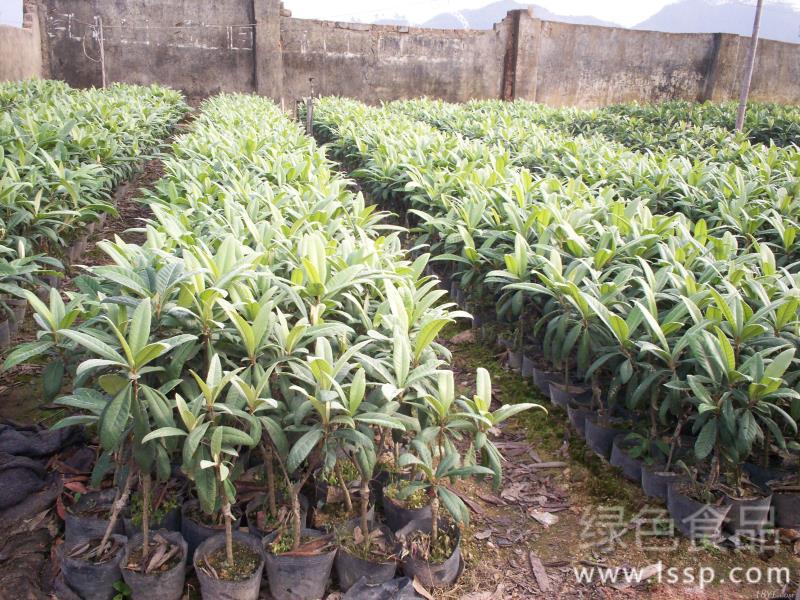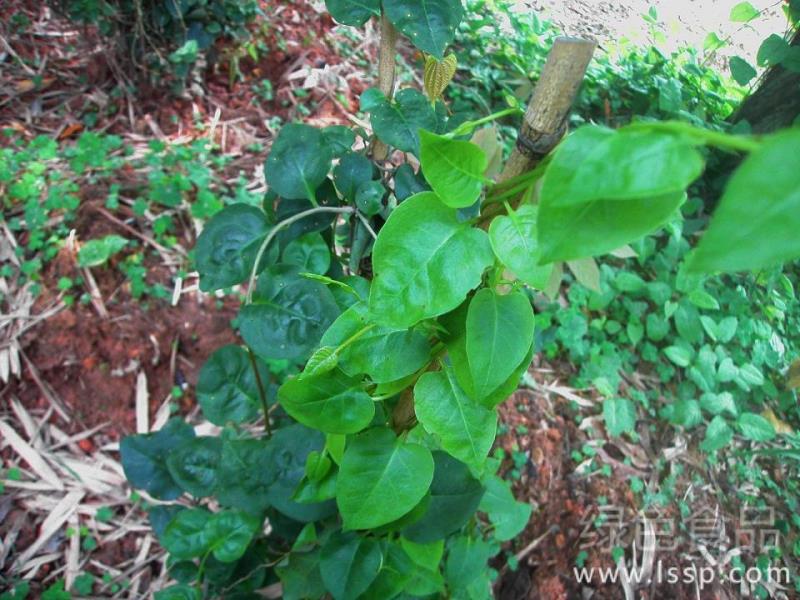Loquat tree pruning methods and key points to adjust tree vigor and bear more fruits

Loquat seedlings
The pruning period of loquat trees must be adjusted according to different conditions such as region, tree age, tree potential and so on. For young trees that have not yet borne fruit, they can be pruned after each time the treetops stop growing and before the next time the treetops grow. For adult trees, auxiliary pruning can only be carried out if there are too many fruits in spring.
Summer pruning after harvest is the most important pruning of loquat trees, which should be done sooner rather than later, and heavy fertilization should be applied after harvest. If it is a late harvest variety, it can be fertilized one week before harvest. If it is an older tree, heavy fertilizer should be applied before fruit thinning in early spring.
The following are several pruning methods of loquat trees for reference.
1. Sprouting: in the stage of fruit shaping at the end of the young tree, in order to make a reasonable allocation of the main branch, secondary main branch and branch group, the buds with suitable direction and position are selected when sprouting, and the excess buds are erased in order to concentrate nutrients to cultivate strong main branches, secondary main branches and so on. By wiping buds, adult trees can reduce the number of branches, enrich and strengthen the fruiting branch group, which is beneficial to fruiting.
two。 Thinning and pruning: loquat has the characteristics of whorled branches, and the delamination distance is dense, forming crown branches with more and less down, more outside and less inside, and lack of light. Therefore, it is necessary to remove dense branches, weak branches, overlapping branches, crossed branches, long branches and redundant branches or weak branches without space development in the crown. When thinning fruit-bearing branches, it is necessary to keep weak and strong, thinning to the inner branch and to the outer branch, so that 1 of the 3 fruit-bearing branches and 2 of the 5 fruit-bearing branches on each base branch are thinned, so that the remaining fruit-bearing branches are distributed outward and on both sides of the base branch. The degree of thinning should be light on the crown, heavy on the outside and light on the inside.
3. Thinning and deletion: in the area where there is no frost injury, in order to adjust the size of the year and ensure high and stable yield in successive years, the fruiting branches of the big year should be thinned and deleted in the full fruit period. The ratio of fruiting branches to growing branches on the whole tree is usually 3:2. If there are too few developing branches, it is necessary to cut off some of the flowers on the fruiting branches and make them mature in the following year. If the branches with less than 3 large leaves on both the mother branch and the fruit branch are weak branches, they can be deleted from the base, and if there is some space or is empty after cutting, they can leave 1 or 2 leaves to retract.
For the loquat trees with the first fruit or just entering the full fruit stage, the ratio of the growing branches to the fruiting branches in the outer part of the crown is 2:1, while the inner chamber of the crown is 1:2 or 1 meter 3 minutes 4. In the areas with frost damage, before the spring shoot is frozen or not, the top flower ear can be cut off first, or according to the investigation over the years, if the freezing injury on the branch tip in a certain direction is serious, the flower ear can be cut off as early as possible to make it spring slightly.
Loquat tree
4. Short cut: mainly refers to the result skill. Generally, according to the position, space and strength of the fruiting branch, 5 cm to 30 cm is left for short pruning, and 5 cm to 10 cm at the top of the summer shoot, so as to prevent the shoot from moving out and the base bald. The outward short shears of the fruit branches of the lateral summer shoots should be longer, and the short shears on both sides should be shorter, generally 10 cm to 20 cm, so that the arrangement of new shoots will be clear and reasonable after shoots are drawn. In short cutting, it is also necessary to keep the outer and upper parts of the crown long, the lower and internal heavy cuts short, and the strong branches long and weak branches short. In terms of the number of cuts, there are more outside and upper parts of the crown, less inside and lower parts of the crown.
5. Retraction: the group of fruiting branches with bald base, drooping branches and weak growth should be retracted to the extent that they can draw strong summer shoots, and do not be too heavy, otherwise it is easy to draw long branches and disturb the crown.
6. Pruning of apprenticeship: when young trees are transformed or trees are replanted with height, it is very easy to grow branches, first of all, to make full use of long branches, and then to transform and finally cut off from the base. If there is a lack of backbone branches and large fruiting branches nearby, they can make full use of their space; if they are made of large fruiting branches, they should first be stretched into a flat and oblique shape in order to ease their growth potential, and when they have reached a certain length, they should be removed from the heart to promote their branches to become good backbone branches or large fruiting branches. If this kind of branch is not pulled into a flat, oblique or pruned branch as soon as possible, although it can also branch next time and bear fruit the year after next, it is often erect, the base is bald, far away from the backbone branch, and it still needs to be renewed and retracted at last, it is better to cut it short as soon as possible, so that it can be updated later.
7. Renewal and pruning of aging trees: loquat trees are generally not easy to senescence. However, if the amount of fertilizer is insufficient, do not pay attention to shaping and pruning, especially the planting is too dense will also produce the phenomenon of premature aging. The transformation of this kind of trees is first of all to strengthen fertilizer and water management, thinning too dense trees, followed by renewal and pruning.
The method of renewal and pruning is to remove too many large branches year by year, lower the crown, and cut the thin 2-year-old 4-year-old branches that are too dense at the periphery and top of the crown. For robust 2-4-year-old branches, try to retain and truncate part of the branches, truncated stakes 5-15 cm. The sprouting pier tips on the inner trunk of the crown were preserved as far as possible, and the weak 2-and 4-year-old branches were mostly cut short to promote sprouting, except for cutting off too thin branches.
- Prev

Cultivation techniques of Panax notoginseng with rich nutrition and stem and leaf vegetables
Cultivation techniques of Panax notoginseng with rich nutrition and stem and leaf vegetables
- Next

Key points of Management techniques for promoting High-yield Tea Garden in Autumn and Winter
Key points of Management techniques for promoting High-yield Tea Garden in Autumn and Winter
Related
- Fuxing push coffee new agricultural production and marketing class: lack of small-scale processing plants
- Jujube rice field leisure farm deep ploughing Yilan for five years to create a space for organic food and play
- Nongyu Farm-A trial of organic papaya for brave women with advanced technology
- Four points for attention in the prevention and control of diseases and insect pests of edible fungi
- How to add nutrient solution to Edible Fungi
- Is there any good way to control edible fungus mites?
- Open Inoculation Technology of Edible Fungi
- Is there any clever way to use fertilizer for edible fungus in winter?
- What agents are used to kill the pathogens of edible fungi in the mushroom shed?
- Rapid drying of Edible Fungi

